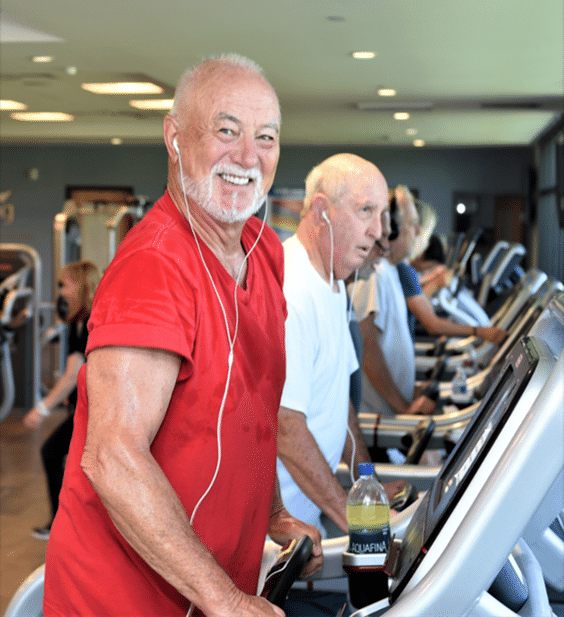HBCOA 714.374.1524 • SENIOR CENTER IN CENTRAL PARK 714.536.5600 • HOAG HEALTH & WELLNESS PAVILION 714.374.1578 • TRANSPORTATION 714.374.1742
Health & Wellness

Join the Movement at the Health & Wellness Pavilion
The Health & Wellness Pavilion, a three-room space in alliance with Hoag, consists of a Fitness Center, Personal Training Studio and Dance Room. It is open Monday – Saturday. Membership for adults ages 50-79 is $120/year and ages 80 & up, $80 / year. Other options for 50+ older adults to fit your lifestyle include a one day pass for $5.00, one week pass for $10.00, or, one month pass for $20.00.Medicare advantage plans are accepted. For more information or to schedule a tour, call 714-374-1578. Click here for latest Health & Wellness Pavilion Newsletter.
I joined the Hoag Health & Wellness Pavilion on the day it opened and have been a regular member since. This center offers so much to [older adults] and not only provides excellent equipment in the beautiful setting of Central Park, but it’s so important for [older adults] to have a gym that caters just to the [adults 50+]” ~Michael Arnell (Pictured)
Personal Training
The Health & Wellness Pavilion is excited to offer personal training services through our new partnership with Crave Fitness. Specializing in training the 50+ community. Crave Fitness brings care, expertise, and motivation to every session. Whether you’re new to exercise or a long-time gym enthusiast, Crave’s certified trainers provide specialized 1-on-1 sessions and small group training classes tailored to individual goals and health needs. These sessions go beyond a typical workout. With personalized attention, expert guidance, and a focus on strength, balance, mobility, and overall well-being, Crave Fitness helps older adults move better, feel stronger ,and live healthier—one session at a time. Get started today.
For more information, contact Crave
Email: CraveSeniorCenter@gmail.com
Phone Number: 949-414-9014
Small Group Classes
The passionate Crave coaches are excited to share their love for lifelong fitness through fun, effective workouts in a supportive, community-driven space.
For more information on class offerings provided throughout the year, you may reach out to Crave Fitness directly.
Email: CraveSeniorCenter@gmail.com
Phone Number: 949-414-9014
Hoag Health Screenings & Lectures

Blood Pressure Screenings: Every 1st Wednesday & 3rd Friday of the month.
Lectures: Every 2nd & 3rd Thursday of the month.
Examples include, Improving Balance, Stroke Warnings
& Signs, Heart Healthy, and Strength & Mobility.
To register, contact the Senior Center in Central Park front desk.
Phone Number: 714-536-5600.
For this month’s lectures, visit the Outlook on Aging Newsletter’s Health & Wellness page.
